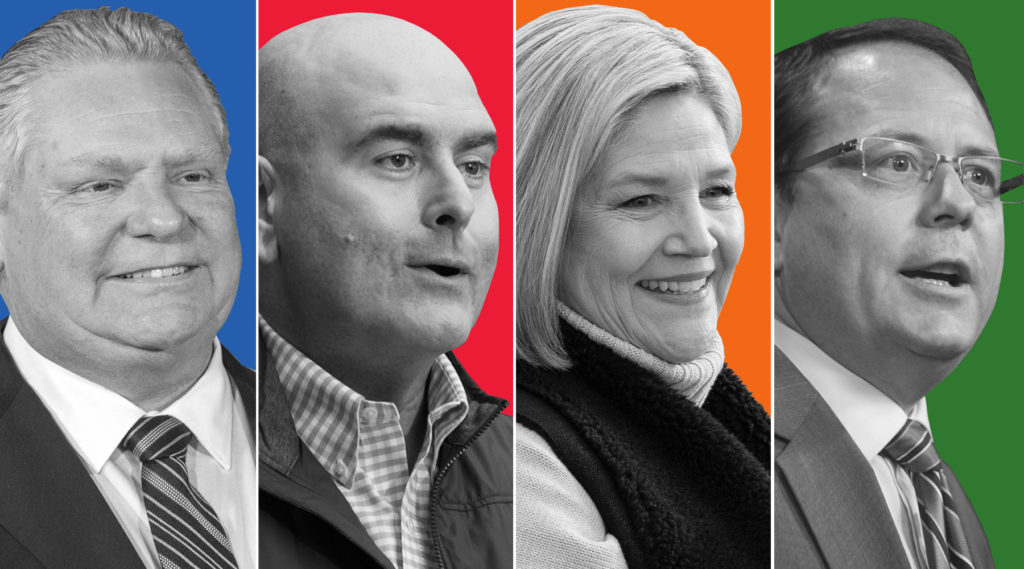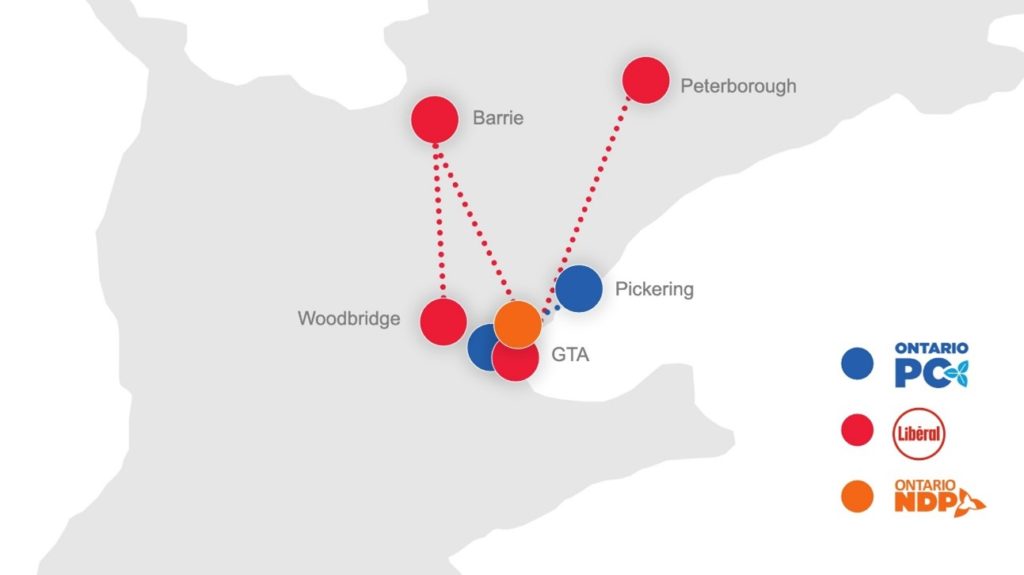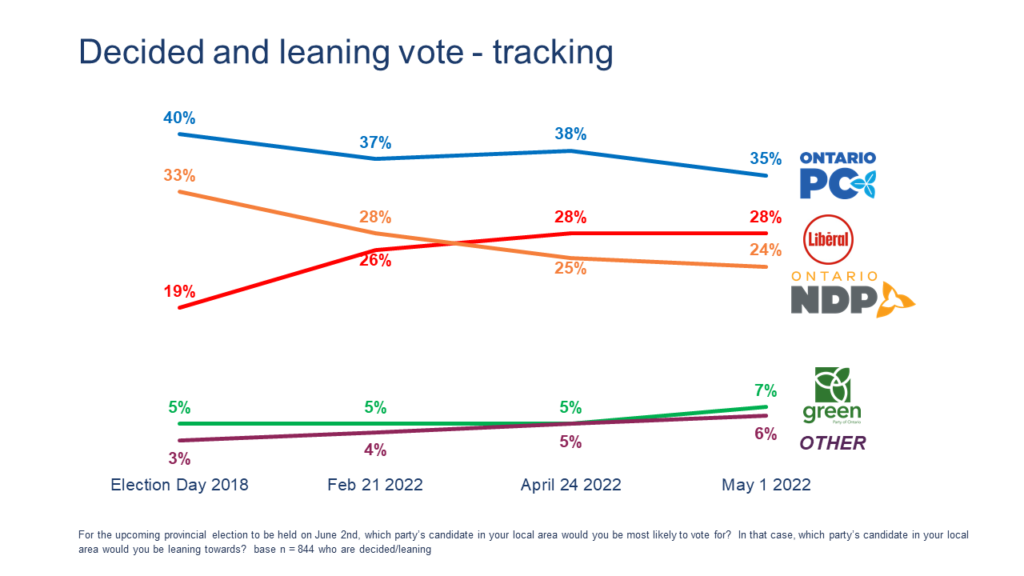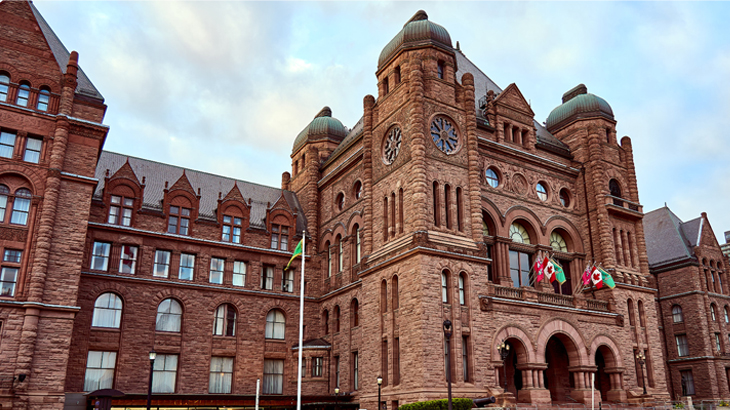Welcome to Earnscliffe Strategies’ Election Insights. This is our weekly analysis of the 2022 Ontario election, summarizing the key issues, strategies motivating the parties and major developments from the campaign trail.

…And they’re off!
The 2022 Ontario Election officially began on Tuesday, as Premier Doug Ford met with Lieutenant Governor Elizabeth Dowdeswell to dissolve the legislature at Queen’s Park and issue the writ of election.
For the premier, and the other party leaders, the conversation and the official election call were merely formalities. The parties and their campaign teams have been hard at work for weeks preparing their plans and making their initial pitches to voters.
Premier Ford formally launched his campaign in earnest on Tuesday evening, with a large rally for supporters in suburban Toronto, the heart of “Ford Nation.” The PC Party campaign this time around includes the newly minted “Yes Express” tour bus and the slogan “Get It Done” featured prominently. While the 2018 campaign focused on a change in party from the nearly decade and a half of Ontario Liberal rule, the 2022 campaign is all about Doug Ford. In the early days of the campaign, the Ontario PCs are framing the ballot box question around economic confidence, lowering the cost of living, and cutting daily commutes. This aligns with the government’s flurry of pre-election announcements, including:
- A big multi-billion dollar auto sector investment alongside the prime minister in Windsor just days before the campaign
- The high-profile refund for license plate registration fees for Ontario drivers
- An agreement with the federal government on $10-a-day child care earlier in the year.
This strategy of well-timed announcements for a government looking to secure a second majority in the legislature has Premier Ford and the PCs situated atop public opinion polls.
But, the race could be tightening.
Andrea Horwath and the Ontario NDP were the first out of the gate, releasing a comprehensive platform, some of the key plans within the 256 page document include:
- Bringing Mental Health services under OHIP (including psychotherapy)
- Dental care for households earning less than $90,000 per year (and a sliding-scale of co-pay for households making up to $200K)
- Raising the minimum wage to $20 per hour by 2026
While focused on their core policy pronouncements and slogan of “they broke it, we’ll fix it”, the NDP are really hoping to coalesce the anti-Ford vote around their campaign this time around. Their core message is built around the premise that with 40 seats in the Ontario Legislature (compared to the Liberal’s 7) only the NDP is best positioned to beat Doug Ford. The NDP are hoping that this message will reach in to the 41% of the Liberal vote who currently say they are voting “against” something, not for something, mostly in larger urban centres, in Toronto, the southwest and eastern Ontario.
For their part, the Ontario Liberals and leader Steven Del Duca look to make a splash of their own and try to repeat the federal Liberal party’s success in 2015, when it made history by jumping the opposition NDP from third place to form government. While a full platform has yet to be released by the time of publication, the party has made a number of high-profile promises including:
- A plan to ban handguns
- A buck-a-ride for transit fares till 2024
- Smaller class sizes, more teachers and fewer screens
Del Duca and the Ontario Liberals have plenty of ground to cover as he introduces himself to many Ontarians after four years in the political wilderness, but the former cabinet minister has an experienced team around him with a track record of election success, and appears to be making gains in polls as the race heats up.
On the campaign trail

Election polling
In the wake of the Ontario provincial budget, Earnscliffe is releasing the second wave of our weekly tracking of Ontario voter intentions. This week’s data is based on an online survey of 1,001 Ontarians of voting age conducted between April 29-May 1, 2022 and shows the Progressive Conservative Party of Ontario (PC) at 35% of decided and leaning vote, with a seven percentage point lead over the Ontario Liberal Party (OLP) (28%), while the Ontario New Democratic Party (ONDP) sits at 24%.

Key dates
- Thursday, May 12: Deadline for nominations
- Monday, May 16: TV Ontario Leaders’ Debate
- Thursday, May 19 to Saturday, May 28: Advance voting period
- Friday, May 27, 6:00 p.m. ET: Vote by mail application deadline
- Thursday, June 2: Election Day
